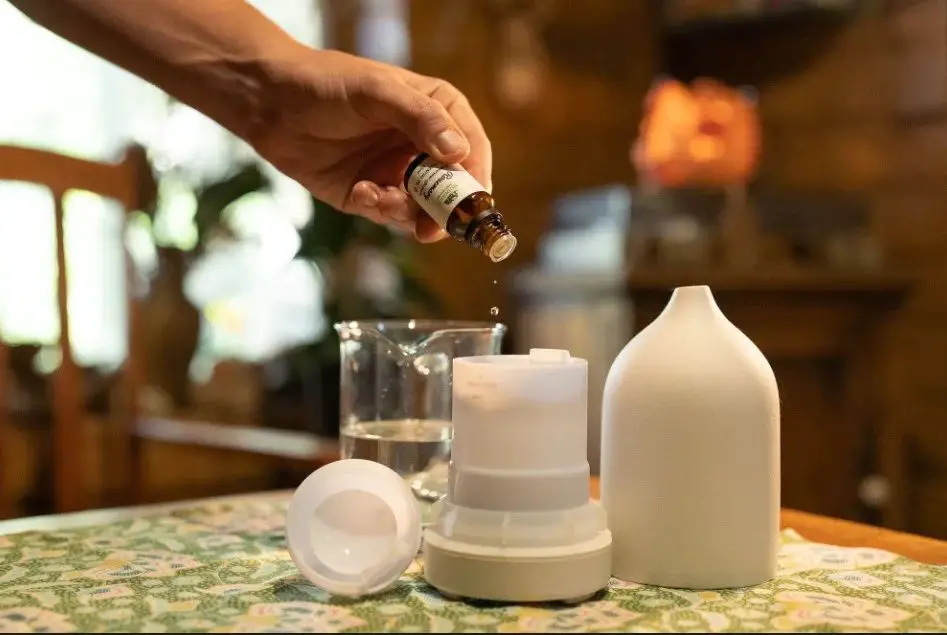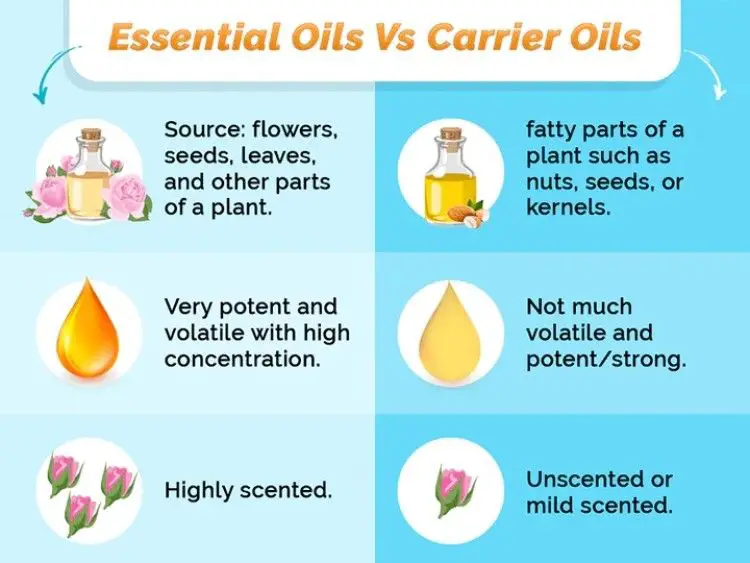What Does Aroma Essential Oil Do?
Definition of Essential Oils
Essential oils are concentrated extracts derived from plants. They are obtained through distillation or mechanical methods that separate the oils from the plant material. Essential oils capture the natural scent and flavor, or “essence” of the plant.
These aromatic oils have been used for centuries in perfumes, cosmetics, cleaning products, and for their therapeutic benefits. They are now commonly used in aromatherapy and personal care products for their fragrance, as well as natural cleaning products.
Essential oils are highly concentrated, so they must be handled with care and diluted before use on the skin. Just a small amount of essential oil can provide the characteristic scent and properties of the plant.
Origins and History
Essential oils have been used for centuries in traditional healing practices around the world. The earliest recorded use comes from ancient Egypt, where oils were used in medicines, cosmetics, mummification, and even in worship rituals in temples. The Ebers Papyrus, one of the oldest medical texts dating back to 1550 BC, mentions over 800 herbal medicine recipes using myrrh, frankincense, cedarwood, and juniper berry oils among others.
Ayurvedic practices in India dating back over 3,000 years also utilized essential oils extensively. Texts describe oils being used in baths, massages, and burned as incense. Chinese medicine dating back to the Han Dynasty (207 BC–220 AD) also made use of essential oils.
While essential oils were used historically, the popularity as we know it today arose in the 1920s with French chemist René-Maurice Gattefossé. After suffering a burn in his laboratory, Gattefossé treated his hand with lavender oil and found it helped heal the wound without infection. This spurred further research into essential oils and their therapeutic potential.
Extraction Methods
There are several ways to extract essential oils from plants, with steam distillation being the most common method. During steam distillation, steam is passed through plant material, causing the plant’s oil compounds to be released from pockets within the plant. The oils are carried away with the steam and then condensed and collected. This method works well for extracting oils from leaves, flowers, bark, roots, and other plant parts.
Expression or cold pressing is used mainly to extract citrus oils from the rind of fruits like oranges, lemons, and grapefruits. The peels are pressed to rupture the oil sacs and squeeze out the juices and oils.
Solvent extraction uses solvents like hexane or ethanol to extract oils from delicate flowers that would be damaged by steam, like jasmine and tuberose. The plant material is soaked in large vats of solvent to absorb the fragrant compounds.
Carbon dioxide extraction is used for plant materials like seeds, nuts, and coconut meat. Pressurized carbon dioxide acts as the solvent to draw out thicker oils.
The method used depends on the plant source and the compound that needs to be extracted. But steam distillation is the most common across the widest variety of plant materials. Proper extraction methods help produce the highest quality and most potent essential oils.
Composition of Oils
Essential oils have a complex mix of organic plant compounds. The main chemical constituents of essential oils are terpenes, esters, aldehydes, ketones, and alcohols. Terpenes, the largest category, are composed of repeating isoprene units and include monoterpenes, sesquiterpenes, and diterpenes. Common terpenes found in essential oils include limonene, pinene, and linalool. Linalool is a monoterpene alcohol that has floral scents and is found in lavender, rosewood, and bergamot oils. Esters like linalyl acetate contribute to the aroma of lavender, clary sage, and bergamot oils. Aldehydes like citral create the lemony scent of citrus oils.
Different compounds within an essential oil contribute to its therapeutic benefits. For example, linalool and linalyl acetate have relaxing properties in lavender oil. The composition of an essential oil depends on the plant species, climate, soil conditions, time of harvest, and extraction method. Understanding the key chemical components helps determine an oil’s safety and proper uses.
Benefits and Uses
Essential oils have a wide range of benefits for physical health, mental health, and cosmetic applications. Many oils contain natural antimicrobial and anti-inflammatory compounds that can help fight infections, reduce swelling and pain, improve skin conditions, and support the immune system (https://www.webmd.com/diet/health-benefits-essential-oils). Oils such as tea tree, clove, thyme, oregano, and cinnamon are known for their antimicrobial effects against bacteria, fungi, and viruses. Lavender, chamomile, rose, and helichrysum are commonly used for their anti-inflammatory properties.
Inhaling essential oils can have powerful effects on mood, emotions, and mental health. Many oils have calming, uplifting, or energizing effects that can help relieve anxiety and depression, boost concentration and alertness, or promote relaxation and sleep (https://www.piedmont.org/living-real-change/health-benefits-of-essential-oils). Lavender, bergamot, and clary sage are calming oils used to reduce stress and anxiety. Lemon, peppermint, rosemary and basil provide an energizing effect to boost mood and mental clarity.
Essential oils are also beneficial in personal care and cosmetic products. They can promote healthy skin and hair, reduce the appearance of blemishes and scars, and moisturize dry skin. Oils like lavender, frankincense, myrrh, tea tree, jojoba, and rosehip are commonly added to skin care products. Essential oils are also popular natural fragrances and flavors in soaps, perfumes, and cosmetics.
Application Methods

There are several ways to use and apply aromatherapy essential oils, including:
Aromatherapy Diffusers
One of the most popular methods is using an aromatherapy diffuser. Diffusers disperse the oil’s aroma into the air so you can inhale the vaporized oil particles. This is an easy way to fill a room with a lovely fragrance and enjoy the aromatherapy benefits. There are many types of diffusers like ultrasonic, evaporative, and nebulizing diffusers. They all work a bit differently but have the same goal of dispersing the oils’ aroma. When using a diffuser, follow the manufacturer’s instructions and don’t exceed the recommended amount of oils.[1]
Topical Use
Applying diluted oils directly onto the skin is another common use. Oils can be added to carrier oils like coconut, jojoba, or sweet almond oil and used for massage, skin care, and other topical uses. Only use a small number of drops mixed with a carrier oil before applying to skin. Perform a patch test before widespread use to check for irritation. Some oils can cause sensitivity when applied topically.[2]
Inhalation
Inhaling essential oils directly is a simple method requiring no tools. You can hold an open bottle under your nose and take deep breaths, or place a few drops on a tissue or cotton ball and breathe in the aroma. Just be sure not to inhale for too long to avoid irritation. Inhalation sends the oil molecules directly to the lungs and bloodstream.[1]
Bath and Massage Oils
Adding a few drops of essential oils to bath water is a popular way to soak in the aromatherapy benefits. The hot water causes the oils to evaporate, surrounding you with the aroma. Oils can also be mixed with unscented lotion, carrier oils, or bath gels to create relaxing massage and bath oils.[2]
Safety Precautions
While essential oils can provide many benefits, they also come with some safety precautions to be aware of. Proper dilution is critical, as essential oils are highly concentrated and can cause skin irritation or sensitivity reactions if applied undiluted. It’s recommended to dilute essential oils with a carrier oil like coconut, jojoba, or almond oil before applying to skin. A general guideline is a 2-3% dilution, or about 12 drops of essential oil per 1 ounce of carrier oil. However, those with sensitive skin may need a 1% dilution or less. Essential oils should always be diluted before use on children. As the University of Minnesota states, “Using undiluted oils on the skin can cause severe irritation” (https://www.webmd.com/skin-problems-and-treatments/ss/slideshow-essential-oils).
Certain essential oils can interact with medications, so it’s important to consult your doctor before using oils if you take prescription medications. Oils like grapefruit, eucalyptus, and peppermint are known to interact with certain medications. Essential oils should also always be kept away from and out of reach of children and pets.
Toxicity can occur if essential oils are ingested at very high concentrations. As Healthline reports, “Ingesting essential oils — by mouth, as a capsule, or swallowed purposely or accidentally — can be dangerous, or even fatal” (https://www.healthline.com/health/are-essential-oils-safe). Proper storage and keeping oils out of reach of children and pets is critical.
Selecting Quality Oils
When choosing essential oils, it’s important to select 100% pure therapeutic grade oils that don’t contain any fillers or synthetic ingredients. The extraction method is also important – proper methods like steam distillation or cold pressing help maintain the therapeutic benefits of the oils. Choose reputable brands that disclose their sourcing and provide testing to ensure purity and potency. High-quality essential oils from trusted companies may cost more, but they are worth the investment for safety and effectiveness.
According to thebalancedbodyworkmassagetherapy.com, “100% pure therapeutic grade should be printed on the label. This means the oils only contain pure plant extracts with no added chemicals”. Oils that don’t specify 100% pure may be diluted or contain synthetics.
Lovingessentialoils.com also recommends looking for oils that state “no fillers added” on the label and avoiding oils that simply say “fragrance oil” or “perfume oil”, as these terms don’t guarantee purity. Their extraction method is also key – “oils should be gently distilled via low-temperature steam distillation or expressed by cold pressing”. Harsh chemical solvents can diminish an oil’s benefits.
When researching brands, thecapecoop.com suggests choosing those that “disclose their sourcing, provide batch-specific testing results, and have certifications like USDA Organic and FDA-GMP facility registration”. This level of transparency indicates high standards around quality and safety.
Storing Oils
Proper storage is crucial for preserving the potency and shelf life of essential oils. Essential oils should always be stored in dark colored glass bottles to protect from light exposure. Direct sunlight and other sources of light can cause the natural chemical components in essential oils to break down more rapidly. Keeping oils stored away from heat and light will help them retain their therapeutic benefits for longer.
Each individual essential oil bottle should also be properly labeled with the name and date you purchased or opened it. The shelf life of essential oils can vary widely, from 1-2 years for citrus oils to over 10 years for very hardy oils like patchouli or sandalwood. You’ll want to check the expected shelf life for each of your oils and note when they were first opened [1].
Storing oils correctly will maximize their potency, therapeutic benefits, and longevity.
Popular Oils and Uses
Some of the most popular essential oils include:
Lavender – Often touted as the most versatile and popular oil. Lavender has a floral, herbaceous aroma that is soothing and calming. It is commonly used for relaxation, stress relief, and sleep. Lavender can also help soothe skin irritation. (The Best 11 Essential Oils and their Benefits)
Peppermint – With its bright, minty aroma, peppermint provides an invigorating sensory experience. It is popular for enhancing energy, boosting exercise performance, and improving concentration. Peppermint also aids digestion. (Most Popular Essential Oils – dōTERRA Product Line)
Tea Tree – Known for its cleansing and rejuvenating properties, tea tree has a medicinal, woody scent. It is often used to promote healthy skin and treat blemishes. Tea tree also supports immune health.
Eucalyptus – Eucalyptus has a distinct, camphorous aroma that opens airways and clears nasal congestion. It is popular in chest rubs and vapor products to relieve coughs and colds. Eucalyptus also supports muscle comfort and relaxation.




